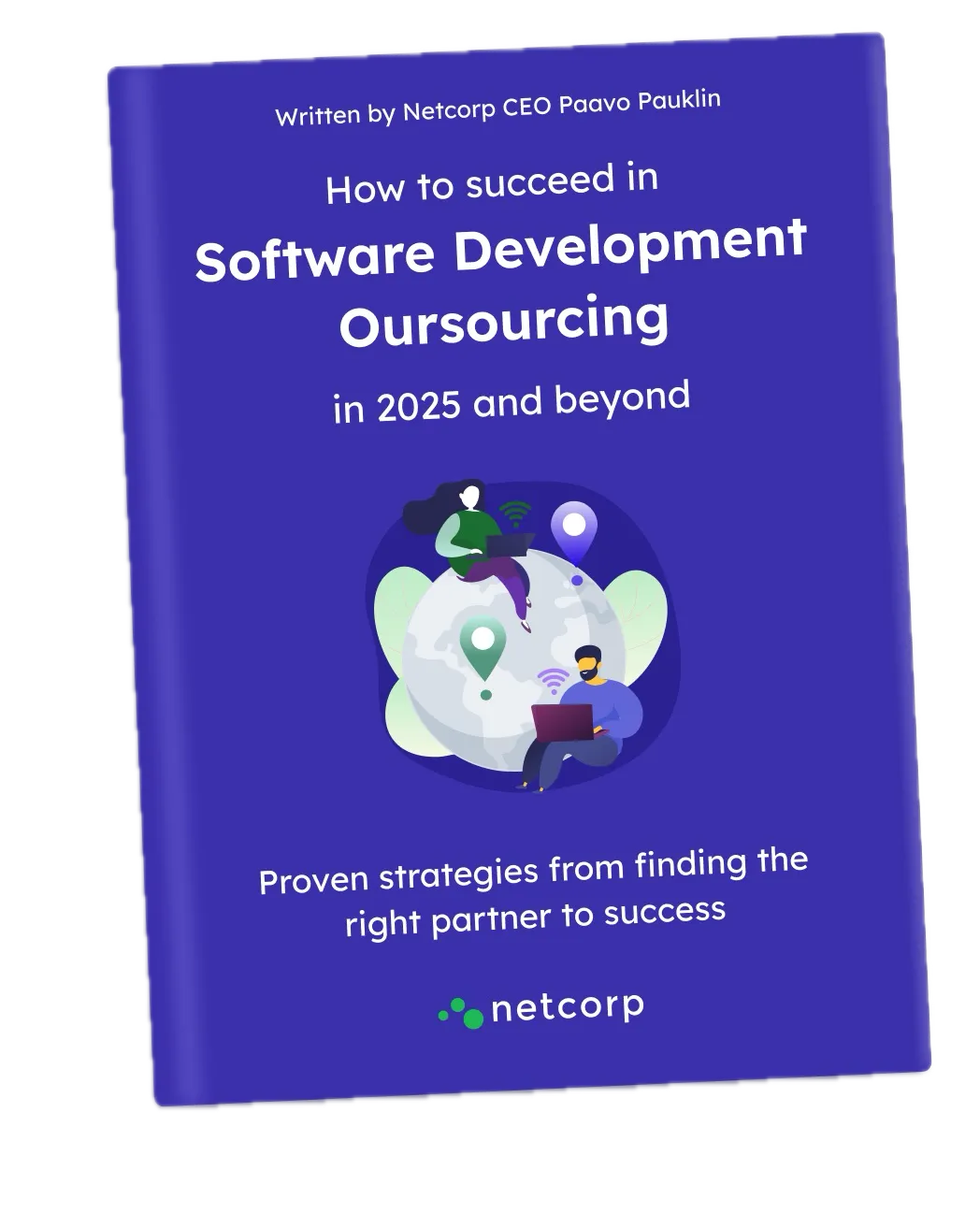Embarking on your first outsourcing project can be intimidating. To maximize the potential of outsourcing, it’s important to get a deep understanding of this IT model.
To this end, our experts have put together the most in-depth outsourcing guide on the internet. Our handbook includes not only seven comprehensive chapters, but also countless supporting articles.
Glean everything you need to know about outsourcing with us below. With our extensive guide, you’ll meet all your business goals and gain a competitive edge in your IT efforts.
Before kicking off your project, it’s important to get a 360-degree view into outsourcing.
Here we’ve gathered must-know information for getting started. Learn about the impacts outsourcing can have on your teams and costs. Delve into key statistics and trends to know the market. Get an insider’s look into top IT outsourcing destinations.
In this chapter, we’ll give you an at-a-glance overview of end-to-end outsourcing. We'll take you through models, strategies and steps to make your project a notable success.
Outsourcing boasts of numerous benefits – from greater efficiency, cost control and time-to-market.
Even so, some business cases are better aligned for outsourcing. Specifically, certain project types and industries are well-suited to its advantages. For example, if you’re undertaking digital transformation, it's ideal for spurring innovation.
In this chapter, we’ll discuss the advantages of outsourcing vs. in-house teams. Plus, we’ll outline best use cases, so you can make the most informed business decision.
Outsourcing your IT project can cut costs up to 53%. Yet you’ll have to be strategic to guarantee that you stay on-budget.
The two most popular pricing models are “fixed price” and “time and materials.” Typically, “time and materials” is your best bet, as it involves paying only for the resources you use.
Keep in mind that a wealth of factors go into the end price. Key areas include the project type, size, complexity and required expertise. Your chosen partner’s location and renown can also play a role.
In this chapter, we’ll walk you through how to get high-quality software without breaking the bank. We’ll detail a cost comparison, as well as consider pricing strategies, common cost risks and more.
A lack of internal preparation can throw your outsourcing project off course. To get results with outsourcing, it’s vital to define a clear vision upfront.
Discuss needs and goals with your stakeholders for the full picture. Complete market research, determine your project KPIs and estimate your budget ceiling. From here, you can craft a business plan before you even contact IT partners.
In this chapter, we’ll go through the essential toolkit for your internal preparation. This includes contract best practices, managing internal resistance and more.
Your outsourcing partner is the #1 driver behind project success. Do your due diligence to find the best-fit partner who will elevate your project.
As a first step, you’ll want to undertake an in-depth vendor analysis. Check reviews, past projects, client referrals and more. Ensure data and IP security by confirming their protocols.
Most importantly, verify relationship values and communication practices before you hire. For example, we’ve put together top Q&A you’ll want to ask to understand your partner’s working style and principles.
In this chapter, we’ll outline our playbook for finding the right IT partner and kicking off phase one.
Managing IT projects can be “notoriously difficult.” As you launch your outsourcing project, lean on industry-best managers and PM practices.
Effective management is focused on empowering people. Create seamless flows by communicating honestly and leveraging PM tools. You should also use trusted practices, such as the agile methodology. After all, projects with established PM practices are 2.5 times more successful.
In this chapter, we’ll delve into leading IT management and communication practices. You'll also gain strategies to keep your outsourcing teams united in the long term.
78% of companies enjoy positive outsourcing relationships. That said, building a strong partnership requires deliberate care and forethought.
A harmonious IT outsourcing relationship starts with having shared values, such as transparency. You must also set clear expectations for communication. For example, get on the same page for your business goals, teaming logistics, etc.
In case of disagreements, you’ll also want a well-defined contract to fall back on. Doing so will mitigate risks and set forth fair resolution processes.
In this chapter, we’ll go over key challenges of outsourcing co-operation. Get expert insight into red flags, mistakes to avoid and risks to keep top of mind.
78% of companies enjoy positive outsourcing relationships. That said, building a strong partnership requires deliberate care and forethought.



Download the free copy of our "Software Development Outsourcing" e-book now to learn the best strategies for succeeding in outsourcing!
